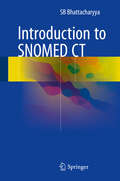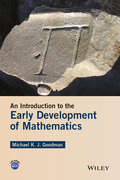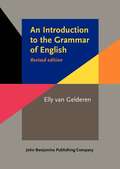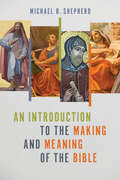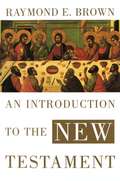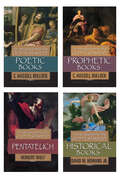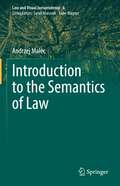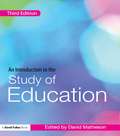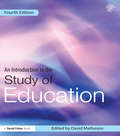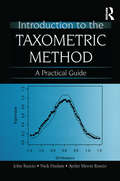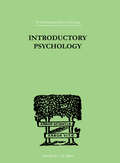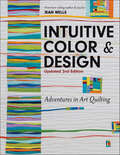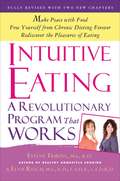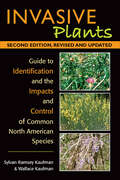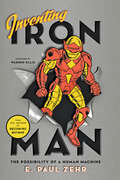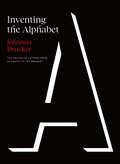- Table View
- List View
Introduction to SNOMED CT
by S. B. BhattacharyyaAs a general introduction to the SNOMED CT clinical terminology code system, the book explains in simple terms a wealth of key aspects, including the fundamentals of SNOMED CT, the various ways in which it can be used, and the methods by which it may quickly be deployed for use within an electronic documentation system that deals with clinical and clinics-related data. Further considerations include how end users can employ the system, how healthcare IT designers and developers can build highly ergonomic systems, and how health informatics experts and clinical analysts can successfully harness the various features that the clinical terminology code system provides in order to unleash the hidden potentials of clinical data. The book brings together material from various sources, presenting it in an easy-to-follow manner and supplemented by analyses of a number of different (imaginary) scenarios including case summaries from the author's experience and knowledge. The book will greatly benefit all stakeholders involved: clinicians, nurses, paramedics, dentists, public health professionals, health informatics professionals and healthcare IT engineers involved in the design and development of information systems for healthcare. Students at both the undergraduate and postgraduate levels seeking a practical introduction to SNOMED CT will find this book to be a valuable guide.
An Introduction to Storytelling: By Storytellers from Around the World
by Christine WillisonWhere do stories come from, and how do we come to know them? Daughters listen with wonder to their grandmothers’ tales. Journalists have their trusted sources. Writers of storybooks draw unconsciously from the works of their predecessors. It is as if every story has within it an infallible truth, contained in the echo of its original telling. The storyteller recounts the tale. The listener hears, learns and remembers. In due course they will retell the same tale, adding in something of their own. And so listeners in time turn into storytellers. This inspiring book brings together the stories from across the world of listeners who themselves became storytellers. They reveal who influenced them the most, what drew them further in, what they learnt, and what they now wish to share with new generations. Tips, tools and tales: read this book, and take your turn.
Introduction to Structural Equation Modeling Using IBM SPSS Statistics and Amos
by Niels BlunchThis comprehensive Second Edition offers readers a complete guide to carrying out research projects involving structural equation modeling (SEM). Updated to include extensive analysis of AMOS' graphical interface, a new chapter on latent curve models and detailed explanations of the structural equation modeling process, this second edition is the ideal guide for those new to the field. The book includes: - Learning objectives, key concepts and questions for further discussion in each chapter. - Helpful diagrams and screenshots to expand on concepts covered in the texts. - Real life examples from a variety of disciplines to show how SEM is applied in real research contexts. - Exercises for each chapter on an accompanying companion website. - A new glossary. Assuming no previous experience of the subject, and a minimum of mathematical knowledge, this is the ideal guide for those new to SEM and an invaluable companion for students taking introductory SEM courses in any discipline. Niels J. Blunch was formerly in the Department of Marketing and Statistics at the University of Aarhus, Denmark
An Introduction to the Early Development of Mathematics
by Michael K. GoodmanAn easy-to-read presentation of the early history of mathematics Engaging and accessible, An Introduction to the Early Development of Mathematics provides a captivating introduction to the history of ancient mathematics in early civilizations for a nontechnical audience. Written with practical applications in a variety of areas, the book utilizes the historical context of mathematics as a pedagogical tool to assist readers working through mathematical and historical topics. The book is divided into sections on significant early civilizations including Egypt, Babylonia, China, Greece, India, and the Islamic world. Beginning each chapter with a general historical overview of the civilized area, the author highlights the civilization’s mathematical techniques, number representations, accomplishments, challenges, and contributions to the mathematical world. Thoroughly class-tested, An Introduction to the Early Development of Mathematics features: Challenging exercises that lead readers to a deeper understanding of mathematics Numerous relevant examples and problem sets with detailed explanations of the processes and solutions at the end of each chapter Additional references on specific topics and keywords from history, archeology, religion, culture, and mathematics Examples of practical applications with step-by-step explanations of the mathematical concepts and equations through the lens of early mathematical problems A companion website that includes additional exercises An Introduction to the Early Development of Mathematics is an ideal textbook for undergraduate courses on the history of mathematics and a supplement for elementary and secondary education majors. The book is also an appropriate reference for professional and trade audiences interested in the history of mathematics. Michael K. J. Goodman is Adjunct Mathematics Instructor at Westchester Community College, where he teaches courses in the history of mathematics, contemporary mathematics, and algebra. He is also the owner and operator of The Learning Miracle, LLC, which provides academic tutoring and test preparation for both college and high school students.
Introduction to the Economic History of China
by Stuart KirbyFirst Published in 2005. Routledge is an imprint of Taylor & Francis, an informa company.
An Introduction to the Grammar of English
by Elly Van GelderenIt has been eight years since An Introduction to the Grammar of English was first published. The second edition is completely revised and greatly expanded, especially where texts, example sentences, exercises, and cartoons are concerned. It continues to provide a very lively and clearly written textbook. The book introduces basic concepts of grammar in a format which inspires the reader to use linguistic arguments. The style of the book is engaging and examples from poetry, jokes, and puns illustrate grammatical concepts. The focus is on syntactic analysis and evidence. However, special topic sections contribute sociolinguistic and historical reasons behind prescriptive rules such as the bans on split infinitives, dangling participles, and preposition stranding. The book is written for undergraduate students and structured for a semester-long course. It provides exercises, keys to those exercises, and sample exams. It also includes a comprehensive glossary.
An Introduction to the Making and Meaning of the Bible
by Michael B. ShepherdA comprehensive and orthodox guide to biblical origins and interpretation How did we get the Bible? How do we interpret it? And what does it mean for our lives today? Michael B. Shepherd introduces undergraduates and seminarians to these crucial questions in this reliable and thorough new textbook. Shepherd covers textual criticism, formation of the canon, and history of translation, all while remaining committed to Scripture&’s ultimate purpose—inviting us to salvation through Jesus Christ. Showing how the Bible directs its own interpretation, Shepherd encourages learners to listen to the Word of God, rather than twisting it to fit their own ends. His section-by-section treatment of the Bible encourages students to view the Bible as cohesive, while remaining sensitive to its diverse genres. Thorough and accessible, this textbook goes beyond typical historical introductions to spiritually form students learning to understand Scripture. An Introduction to the Making and Meaning of the Bible is the serious, evangelical introduction your students need and will reference for years to come.
Introduction to the New Testament
by Raymond E. BrownEvery generation needs a comprehensive, reliable Introduction to the New Testament that opens the biblical text to the novice. Raymond E. Brown's An Introduction to the New Testament is the most trustworthy and authoritative guidebook for a generation seeking to understand the Christian Bible. Universally acknowledged as the dean of New Testament scholarship, Father Brown is a master of his discipline at the pinnacle of his career. Who else could cover the entire scope of the New Testament with such ease and clarity? This gifted communicator conveys the heartfelt concern of a beloved teacher for his students, as he walks the reader through the basic content and issues of the New Testament. While the book contains a wealth of information, its most impressive features are how the author boils down a life time of scholarship into basic summaries of each book, provides a historical overview of the ancient Greco-Roman world, engages in discussions of theological issues, and presents supplementary material for deeper understanding, such as tables, maps, bibliographies, and appendixes. Those opening to the New Testament for the first time and those seeking deeper insights could not ask for more in a primer to the Christian Bible.
Introduction to the Nonprofit Sector: A Practical Approach for the Twenty-first Century
by Gary M. GrobmanThis is an introductory text on the nonprofit sector and nonprofit organizations. It provides an overview of the history, theory, and scope of the nonprofit sector. It discusses issues facing nonprofits, such as legal and regulatory issues, ethics, quality, fiscal, and liability issues. It also provides practical guidelines for writing mission and vision statements, strategic planning, hiring, firing, lobbying, communicating, using the Internet, and other functions of nonprofit organizations. Each chapter includes a synopsis at the beginning, as well as discussion questions, activities, and bibliographic references at the end. An index is included.
Introduction to the Old Testament, set of four books (Prophetic, Poetic, Pentateuch, Historical)
by C. Hassell Bullock David M. Howard Jr. Herbert WolfThis package contains all four books of An Introduction to the Old Testament set: An Introduction to the Old Testament Historical Books, An Introduction to the Old Testament Poetic Books, An Introduction to the Old Testament Prophetic Books,and An Introduction to the Old Testament Pentateuch.In An Introduction to the Old Testament Historical Books, incredible events, amazing love stories, larger-than-life personalities and deep theological implications and themes are just part of the treasure that awaits readers. These books tell the story of the nation of Israel and the God who loves her, punishes her, and always brings this recalcitrant people back to Himself. In An Introduction to the Old Testament Poetic Books, C. Hassell Bullock, a noted Old Testament scholar, delves deep into the hearts of the five poetic books, offering readers helpful details such as hermeneutical considerations for each book, theological content and themes, detailed analysis of each book, and cultural perspectives. In An Introduction to the Old Testament Prophetic Books, C. Hassell Bullock presents a clear picture of some of history's most profound spokesmen--the Old Testament prophets--and the God who shaped them. Our generational distance from the age of the prophets might seem to be a measureless chasm. Yet we dare not make the mistake of assuming that passing years have rendered irrelevant not only the Old Testament prophets, but also the God who comprehends, spans, and transcends all time. In An Introduction to the Old Testament Pentateuch, Old Testament expert Herbert Wolf provides layreaders and scholars alike with a strong undergirding of understanding and knowledge in this introduction that reveals both the seriousness and excitement of the Pentateuch.
Introduction to the Old Testament, set of four books (Prophetic, Poetic, Pentateuch, Historical)
by C. Hassell Bullock David M. Howard Jr. Herbert WolfThis package contains all four books of An Introduction to the Old Testament set: An Introduction to the Old Testament Historical Books, An Introduction to the Old Testament Poetic Books, An Introduction to the Old Testament Prophetic Books,and An Introduction to the Old Testament Pentateuch.In An Introduction to the Old Testament Historical Books, incredible events, amazing love stories, larger-than-life personalities and deep theological implications and themes are just part of the treasure that awaits readers. These books tell the story of the nation of Israel and the God who loves her, punishes her, and always brings this recalcitrant people back to Himself. In An Introduction to the Old Testament Poetic Books, C. Hassell Bullock, a noted Old Testament scholar, delves deep into the hearts of the five poetic books, offering readers helpful details such as hermeneutical considerations for each book, theological content and themes, detailed analysis of each book, and cultural perspectives. In An Introduction to the Old Testament Prophetic Books, C. Hassell Bullock presents a clear picture of some of history's most profound spokesmen--the Old Testament prophets--and the God who shaped them. Our generational distance from the age of the prophets might seem to be a measureless chasm. Yet we dare not make the mistake of assuming that passing years have rendered irrelevant not only the Old Testament prophets, but also the God who comprehends, spans, and transcends all time. In An Introduction to the Old Testament Pentateuch, Old Testament expert Herbert Wolf provides layreaders and scholars alike with a strong undergirding of understanding and knowledge in this introduction that reveals both the seriousness and excitement of the Pentateuch.
Introduction to the Practice of Statistics, Seventh Edition
by David S. Moore George P. McCabe Bruce A. CraigWith its focus on data analysis, statistical reasoning, and the way statisticians actually work, Introduction to the Practice of Statistics (IPS) helped bring the power of critical thinking and practical applications to today's statistics classroom. Unlike more traditional "plug and chug" /formula driven texts, IPS de-emphasizes probability and gives students a deeper understanding of statistics.
Introduction to the Semantics of Law (Law and Visual Jurisprudence #6)
by Andrzej MalecThis book offers an introduction to the language of law from the perspective of logical semantics. As a logical tool, Boguslaw Wolniewicz’s formal ontology of situations is adapted. The central issue addressed is the meaning of normative statements, primarily legal norms. The main outcome of the book consists in explications of several legal notions (including legal events, legal acts and legal rules) in terms of the formal ontology of situations. In addition, the book concludes that legal norms are sentences in a logical sense, so some are true, while others are false, and that their logical value does not depend on whether or not they were adopted in the law-making process. Lastly, the book contends that there are semantic relations between orders that are similar to entailment, contradiction, opposition, and sub-opposition, despite the fact that orders are not sentences in a logical sense, i.e., they are neither true nor false.The book also presents some original Wittgenstein-style deontic logics built on the first order logic. The formal results are applied to selected problems in the theory of law, including the problem of the possibility of algorithmic application of legal norms.
An Introduction to the Study of Education
by David MathesonThis fully updated, fourth edition of An Introduction to the Study of Education provides a comprehensive and reflective introduction to the study of education, inviting students to question what education is, who it is for and what purpose it serves. Taking the reader from the early years through to lifelong learning, it examines all forms of education and learning. This new edition includes ten completely new chapters and a step-by-step guide to essay writing. There is also a companion website to accompany the book, featuring additional chapters which can be visited at www.routledge.com/cw/matheson.This fully updated, fourth edition provides: a full exploration of the historical, sociological, philosophical and psychological roots of education; a clear focus on the individual levels of education - preschool, compulsory, post-compulsory and lifelong learning; the latest debates within special educational needs; an in-depth examination of learning styles; insights into the historical development of education and the role of, and background to, research in education; a focus on current educational practice and diversity across the United Kingdom and Ireland. Written in a clear and accessible style, this is the essential core text for all beginning students on undergraduate and postgraduate courses in Education Studies and all those interested in education today, where it came from and where it is going.
An Introduction to the Study of Education
by David MathesonThis fully updated, fourth edition of An Introduction to the Study of Education provides a comprehensive and reflective introduction to the study of education, inviting students to question what education is, who it is for and what purpose it serves. Taking the reader from the early years through to lifelong learning, it examines all forms of education and learning. This new edition includes ten completely new chapters and a step-by-step guide to essay writing. There is also a companion website to accompany the book, featuring additional chapters which can be visited at www.routledge.com/cw/matheson.This fully updated, fourth edition provides: a full exploration of the historical, sociological, philosophical and psychological roots of education; a clear focus on the individual levels of education – preschool, compulsory, post-compulsory and lifelong learning; the latest debates within special educational needs; an in-depth examination of learning styles; insights into the historical development of education and the role of, and background to, research in education; a focus on current educational practice and diversity across the United Kingdom and Ireland. Written in a clear and accessible style, this is the essential core text for all beginning students on undergraduate and postgraduate courses in Education Studies and all those interested in education today, where it came from and where it is going.
Introduction to the Taxometric Method: A Practical Guide
by John Ruscio Nick Haslam Ayelet Meron RuscioIntroduction to the Taxometric Method is a user-friendly, practical guide to taxometric research. Drawing from both classic and contemporary research, it provides a comprehensive introduction to the method. With helpful tools and guidance, the book is intended to teach those new to the method, as well as those already familiar with it, tips on how to conduct and evaluate taxometric investigations. The book covers a broad range of analytic techniques, describing their logic and implementation as well as what is known about their performance from systematic study. The book opens with the background material essential to understanding the research problems that the taxometric method addresses. The authors then explain the data requirements of taxometric analysis, the logic of each procedure, factors that can influence results and lead to misinterpretations, suggestions for choosing the best procedures, and methodological safeguards to prevent erroneous conclusions. Illustrative examples of each procedure and consistency test demonstrate how to perform analyses and interpret results using a variety of data sets. A checklist of conceptual and methodological issues that should be addressed in any investigation is included. The downloadable resources provide a variety of programs for performing taxometric analyses along with simulations and analyses of data sets. Introduction to the Taxometric Method is ideal for researchers and students conducting or evaluating taxometric studies in the social and behavioral sciences, especially those in clinical and personality psychology, as well as those in the physical sciences, education, biology, and beyond. The book also serves as a text for courses on this method, or as a supplement in psychological assessment, statistics, or research methods courses. Familiarity with taxometrics is not assumed.
Introduction To VBA For Excel
by Steven ChapraThis introductory text explains how to develop programs using VBA within the Microsoft Excel environment. The text does not assume any previous programming experience. The new edition has been revised to bring it up-to-date with the Office 2007 environment.
Introductory Horticulture, 4th Edition
by H. Edward Reiley Carroll L. ShryThis step-by-step text covers the basic principles of horticulture and their practical applications. Topics include: interior plantscape and xeriscaping, biological pest control, seasonal greenhouse crops, fruit and vegetable gardens, Easter lilies, perennials, micro-propagation or tissue culture, bow-making, corsages and boutonnieres, and pesticides.
Introductory Psychology: AN APPROACH FOR SOCIAL WORKERS (International Library Of Psychology Ser.)
by Price-Williams, D RFirst published in 1999. Routledge is an imprint of Taylor & Francis, an informa company.
Intuitive Color & Design: Adventures in Art Quilting
by Jean WellsThink outside the block and look what happens! Jean Wells gives you the assignment of your life: put away your ruler and use your inner vision to design and piece spectacular, free-form quilts you'd never have guessed you could create. In this updated edition of best-selling Intuitive Color & Design, Jean’s workshop assignments get your creative juices flowing, giving you challenges to expand your quilting horizons. Start by learning to see line and color; study the nuts and bolts of design; develop your color work and composition; and when you get stuck, there’s expert advice on problem solving. You will never see quiltmaking in the same way again. • Creative exercises take your use of color, line, design, and piecing in dramatic new directions • Use photographs and journals to find inspiration and develop your ideas with Jean’s updated, expert guidance • Learn innovative finishing techniques to show your quilts at their best • Classroom-proven techniques make the adventure easy for any quilter
Intuitive Eating: A Revolutionary Program That Works
by Evelyn Tribole Elyse ReschFirst published in 1995, Intuitive Eating has become the go-to book on rebuilding a healthy body image and making peace with food. We've all been there, angry with ourselves for overeating, for our lack of willpower, for failing at yet another diet. But the problem is not us; it's that dieting, with its emphasis on rules and regulations, has stopped us from listening to our bodies. Written by two prominent nutritionists, Intuitive Eating will teach you: * How to reject diet mentality forever *How our three Eating Personalities define our eating difficulties * How to find satisfaction in your eating * How to feel your feelings without using food * How to honor hunger and feel fullness * How to follow the ten principles of "Intuitive Eating", * How to achieve a new and safe relationship with food and, ultimately, your body * How to raise an "intuitive eater"--NEW! * The incredible science behind intuitive eating--NEW! This revised edition includes updates and expansions throughout, as well as two brand new chapters that will help readers integrate intuitive eating even more fully into their daily lives.
Invasive Plants: Guide to Identification and the Impacts and Control of Common North American Species
by Sylvan Ramsey Kaufman Wallace KaufmanNewly updated: &“Invasive plants are ecological tumors that degrade food webs wherever they go. The third edition of [this book] is an invaluable reference.&” —Douglas Tallamy, New York Times–bestselling author of Nature&’s Best Hope This easy-to-use, wide-ranging guide to invasive plants in North America features full-color photos and descriptions of more than 250 alien species—both terrestrial and aquatic—that are in some cases changing the landscape to an almost unimaginable degree. Accompanying text describes the plant&’s environmental and economic impacts as well as management techniques used to control it. Also included is an explanation of what an invasive is and a step-by-step identification key. Used by U.S. Forest Service botanists, this is an essential guide to understanding this unprecedented environmental challenge that is threatening biodiversity—and the human population that depends on it to survive. &“A colorful, general field guide to the major invasive plants of North America…packed with relevant information.&” —Great Plains Research: A Journal of Natural and Social Sciences &“A wonderful guide.&” —The Roanoke Star
Inventing Indigenous Knowledge: Archaeology, Rural Development and the Raised Field Rehabilitation Project in Bolivia (Indigenous Peoples and Politics)
by Lynn SwartleyThis volume provides a multi-sited and multivocalic investigation of the dynamic social, political and economic processes in the creation and implementation of an agricultural development project. The raised field rehabilitation project attempted to introduce a pre-Columbian agricultural method into the contemporary Lake Titicaca Basin.
Inventing Iron Man: The Possibility of a Human Machine
by E. Paul ZehrTony Stark has been battling bad guys and protecting innocent civilians since he first donned his mechanized armor in the 1963 debut of Iron Man in Marvel Comics. Over the years, Stark’s suit has allowed him to smash through walls, fly through the air like a human jet, control a bewildering array of weaponry by thought alone, and perform an uncountable number of other fantastic feats. The man who showed us all what it would take to become Batman probes whether science—and humankind—is up to the task of inventing a real-life Iron Man.E. Paul Zehr physically deconstructs Iron Man to find out how we could use modern-day technology to create a suit of armor similar to the one Stark made. Applying scientific principles and an incredibly creative mind to the question, Zehr looks at how Iron Man’s suit allows Stark to become a superhero. He discusses the mind-boggling and body-straining feats Iron Man performed to defeat villains like Crimson Dynamo, Iron Monger, and Whiplash and how such acts would play out in the real world. Zehr finds that science is nearing the point where a suit like Iron Man’s could be made. But superherodom is not just about technology. Zehr also discusses our own physical limitations and asks whether an extremely well-conditioned person could use Iron Man’s armor and do what he does.A scientifically sound look at brain-machine interfaces and the outer limits where neuroscience and neural plasticity meet, Inventing Iron Man is a fun comparison between comic book science fiction and modern science. If you’ve ever wondered whether you have what it takes to be the ultimate human-machine hero, then this book is for you.
Inventing the Alphabet: The Origins of Letters from Antiquity to the Present
by Johanna DruckerThe first comprehensive intellectual history of alphabet studies.Inventing the Alphabet provides the first account of two-and-a-half millennia of scholarship on the alphabet. Drawing on decades of research, Johanna Drucker dives into sometimes obscure and esoteric references, dispelling myths and identifying a pantheon of little-known scholars who contributed to our modern understandings of the alphabet, one of the most important inventions in human history. Beginning with Biblical tales and accounts from antiquity, Drucker traces the transmission of ancient Greek thinking about the alphabet’s origin and debates about how Moses learned to read. The book moves through the centuries, finishing with contemporary concepts of the letters in alpha-numeric code used for global communication systems. Along the way, we learn about magical and angelic alphabets, antique inscriptions on coins and artifacts, and the comparative tables of scripts that continue through the development of modern fields of archaeology and paleography. This is the first book to chronicle the story of the intellectual history through which the alphabet has been “invented” as an object of scholarship.
